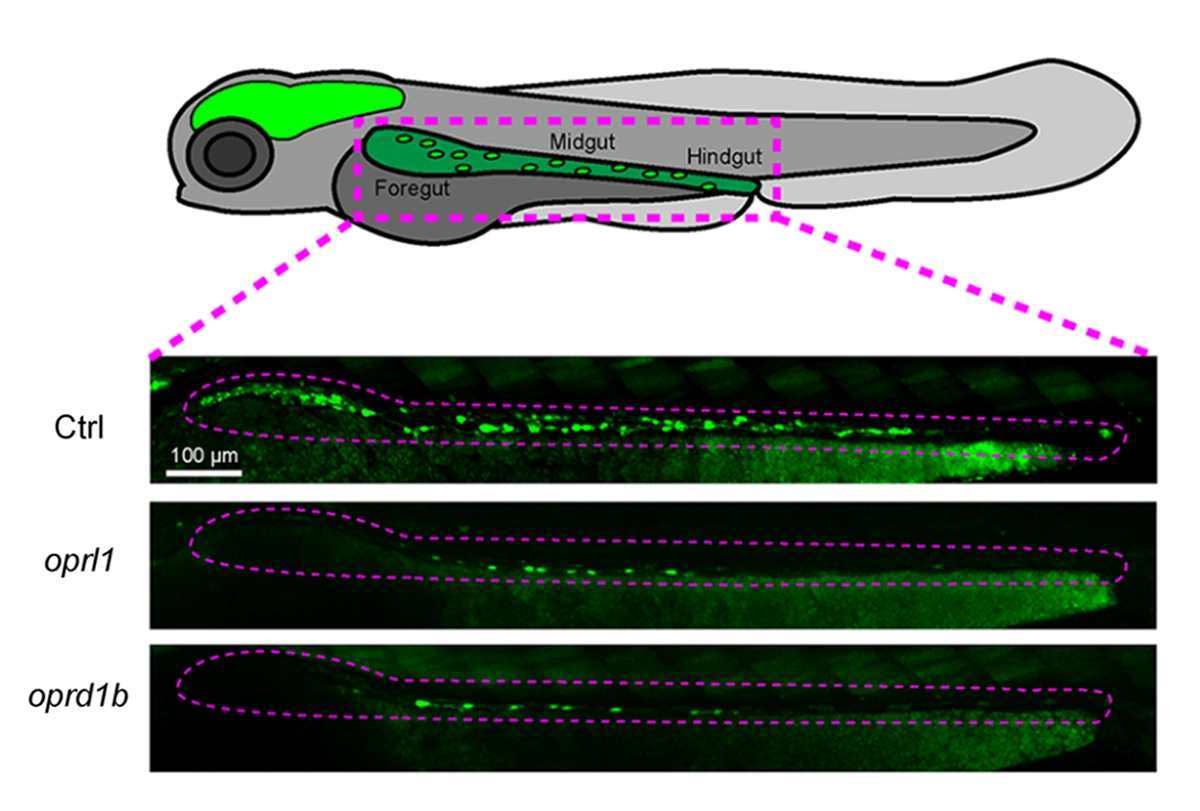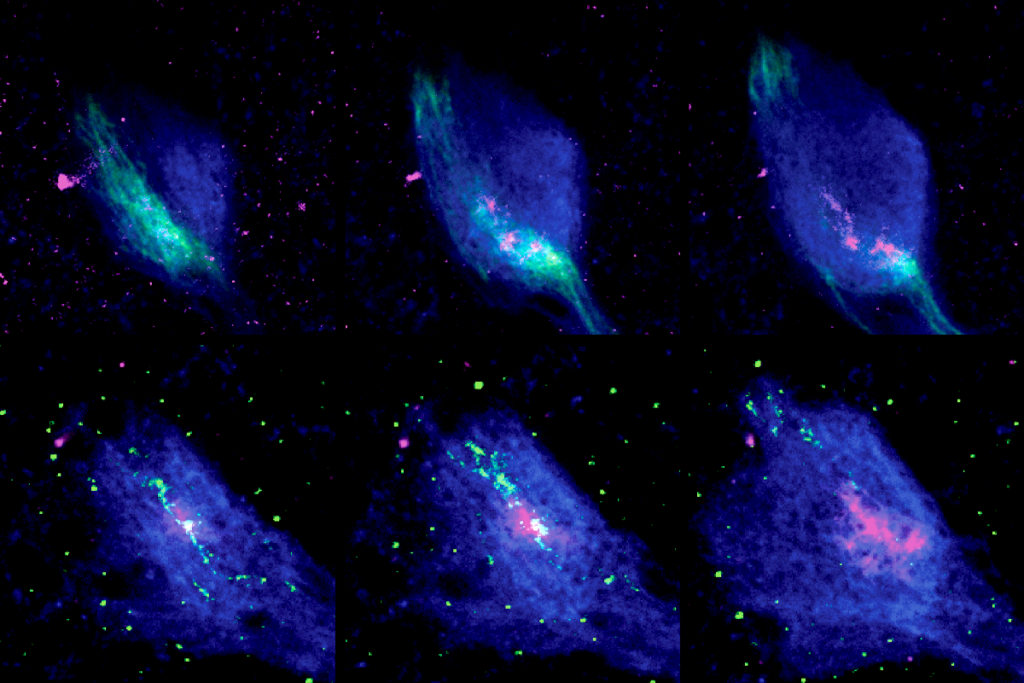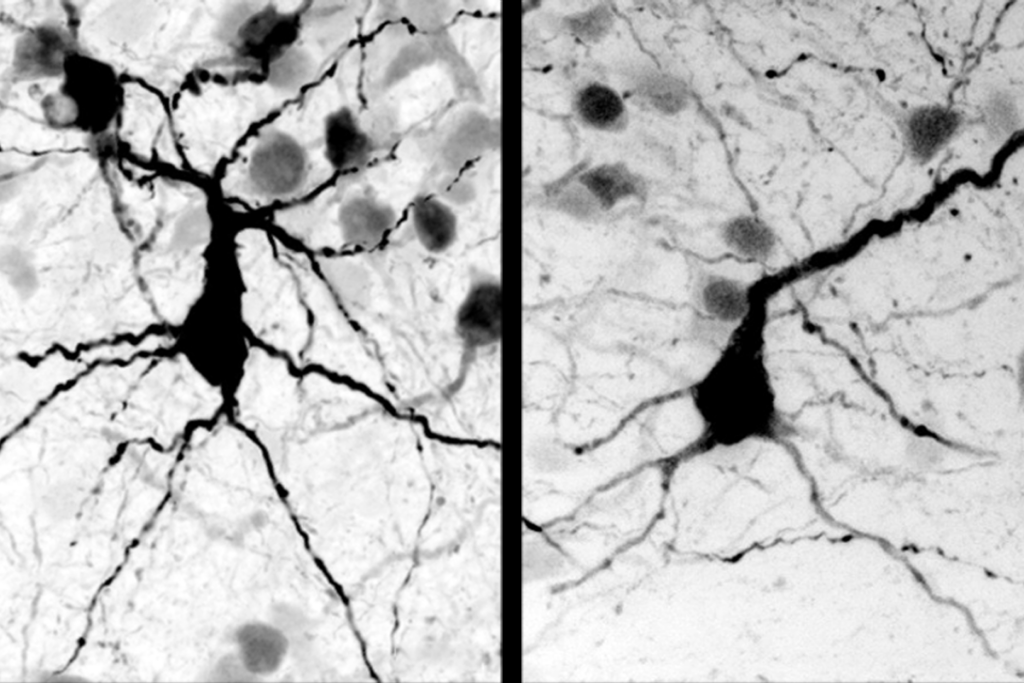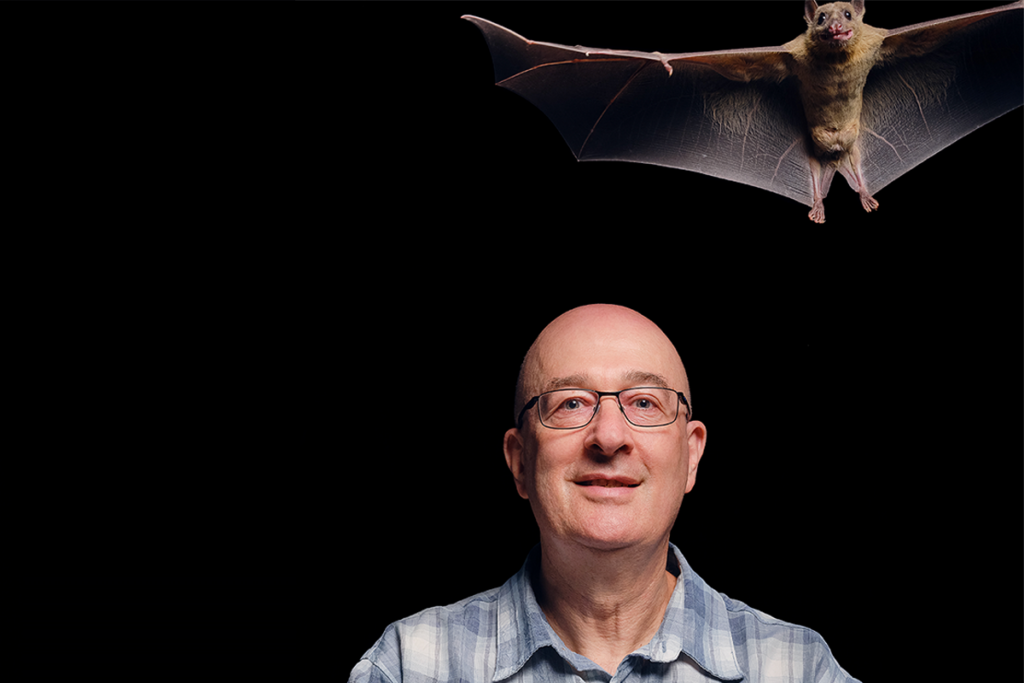Opioid receptors are integral to the formation of the enteric nervous system, the network of neurons that lines the gastrointestinal tract and makes up the largest part of the peripheral nervous system, according to a new study in zebrafish.
Scientists have long known that the receptors are present in the enteric nervous system of adult animals, where they modulate gut motility and secretion. But two genes encoding opioid receptors, OPRL1 and OPRD1B, are also expressed in embryonic stem cells that later differentiate into enteric neurons, the new research reveals.
“It was just pure shock, actually, to find them,” says lead researcher Rosa Uribe, assistant professor of biosciences at Rice University. “What are they doing there?”
Mutating either of the genes in zebrafish embryos hampers the development of the enteric nervous system, the study shows. Three days after fertilization, the embryos had a decreased number of enteric neurons—and the stem cells that give rise to them—along the gut. And similar changes occurred in embryos exposed to the nociceptin receptor antagonist LY2940094 (which inhibits OPRL1) or the natural phenolic compound curcumin (which dampens its expression), as well as in embryos exposed to the synthetic peptide agonist DADLE, which activates OPRD1B. The findings were published in PLOS One in May.
Although the research is still preliminary, the findings open up a new line of inquiry into how the enteric nervous system forms in zebrafish, humans and other organisms, Uribe says.
But more validation is needed to confirm that the opioid receptors alter the development of the enteric nervous system, says Daniel Poole, a senior research fellow at Monash University in Australia, who was not involved in the study.
T
he enteric neurons that did form in the zebrafish embryos lacking opioid receptors were regionally grouped, with fewer at the distal ends of the gut, says Marissa Scavuzzo, a postdoctoral researcher at Case Western University who was also not associated with the research. “Maybe it’s only specific subtypes of neural crest cells that are having a deficit, or maybe it’s actually specific stages of colonization [affected,]” she says. “This [study] kind of sets the stage for all of these questions.”Uribe points to questions about what opioid receptors might do early in the development process. The receptors might instruct cells on what type of neuron they should become, or they might signal where or when neurons should migrate, and when they should stop, she adds.
But additional assessments are necessary to determine the opioid receptors’ role in these changes, Poole stresses. Curcumin is not selective for opioid receptors, and LY2940094 was used in high concentration, protocols that call into question whether the compounds successfully blocked the receptors’ function or if they inadvertently interfered with the development process in another way, he says. And, he notes, it’s “confusing” that activating OPRD1B has similar effects as inhibiting OPRL1.
The results may not fully translate to mammals, Poole says, because mice that lack opioid receptors are not reported to have the same type of gut impairment seen in the zebrafish embryos. “I’m not questioning their result,” he says. “It’s an exciting approach and they have identified novel things, but it just needs a little bit of validation.”
Uribe agrees that it is still too soon to form conclusions about what the findings might mean for people or other organisms, and she suggests that “any perturbation in the opioid signaling pathway (enhancement or inhibition) is sufficient to derail early enteric nervous system development.” Moving forward, her research team plans to look at how well the findings translate to mammals, she says.
“It’s a very early model,” she says. “Lots of other research needs to confirm it and validate that.”





